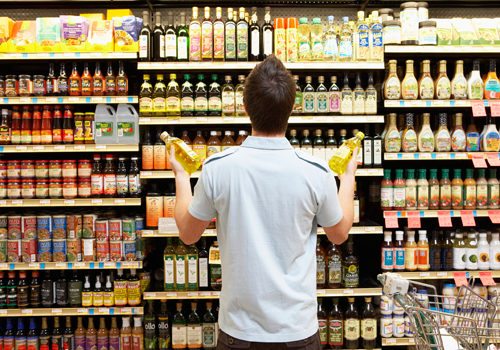Where should you place the products in your store? Or, more precisely, which product categories should be next to one another to optimize shopping? Your choices can grow or shrink sales, and a well-thought-out merchandising plan can subconsciously relax your customer, encouraging her or him to slow down and explore your store more fully.
Don’ts
Sometimes you can improve your merchandising plan by simply avoiding some basic errors. For example, putting tortilla chips first or early in the shopping flow is a big no-no. Why? Because chips and other puffed, fried or baked snacks are light weight, delicate and crushable, and often come in large bags that take up a lot of room in the bottom of the shopping basket.
Imagine a shopper putting two or three one-pound bags of tortilla chips in the bottom of her cart. Where is the gallon of apple juice you have on sale in the next aisle going to go; on top of the chips? Not likely. Your shopper will probably bypass your juice aisle for fear of damaging the delicates already in the bottom of her basket.
Here’s another, more difficult one: putting the freezer too early in the shopping flow. Why? Because once I select even one frozen item like ice cream, it’s melting in my cart all the way to the register. As a result, I’m now rushing through the rest of the store. I may not consciously realize I’m missing lots of great products on display later in the flow; I just know I need to get that ice cream home before it melts.
I once had a client whose freezer was located very early in the shopping flow. Sales in the store were growing nicely in every category except frozen foods. Fortunately, the dairy cases were on the opposite wall, toward the end of the shopping flow near the registers, and were about the same total length as the freezers. Once the freezers and coolers were reversed, sales on frozen items caught up to the growth of the rest of the store, and grew 40% in the first month after the changeover.
Customers made comments like, “I didn’t know you had frozen items.” Imagine that! What this reveals is the very narrow focus most shoppers have when on a mission to complete a shopping task.
Do’s
There are two basic rules you should try to follow in organizing your store: by meal periods (breakfast, lunch and dinner) and from heavy products to light ones. As you saw by the earlier example, light crushables will easily go on top of heavy products already in the cart, but not the reverse.
A good product flow may be one of the most affordable ways to increase your sales; by selling more to shoppers already wheeling baskets around your store. If you would like a free Product Flow Chart listing the category adjacencies that make the most sense, please contact me at jay@retailinsights.com. WF
Jay Jacobowitz is president and founder of Retail Insights®, a professional consulting service for natural products retailers established in 1998, and creator of Natural Insights for Well Being®, a comprehensive marketing service designed especially for independent natural products retailers. With 38 years of wholesale and retail industry experience, Jay has assisted in developing over 1,000 successful natural products retail stores in the U.S. and abroad. Jay is a popular author, educator, and speaker, and is the merchandising editor of WholeFoods Magazine, for which he writes Merchandising Insights and Tip of the Month. Jay also serves the Natural Products Association in several capacities. In 2014, Jay received the Natural Products Association’s Industry Champion Award for notable contributions to the industry above and beyond commercial success. He can be reached at (800)328-0855 or via e-mail at jay@retailinsights.com.
Published in WholeFoods Magazine, August 2015, (online 7/16/2015)










